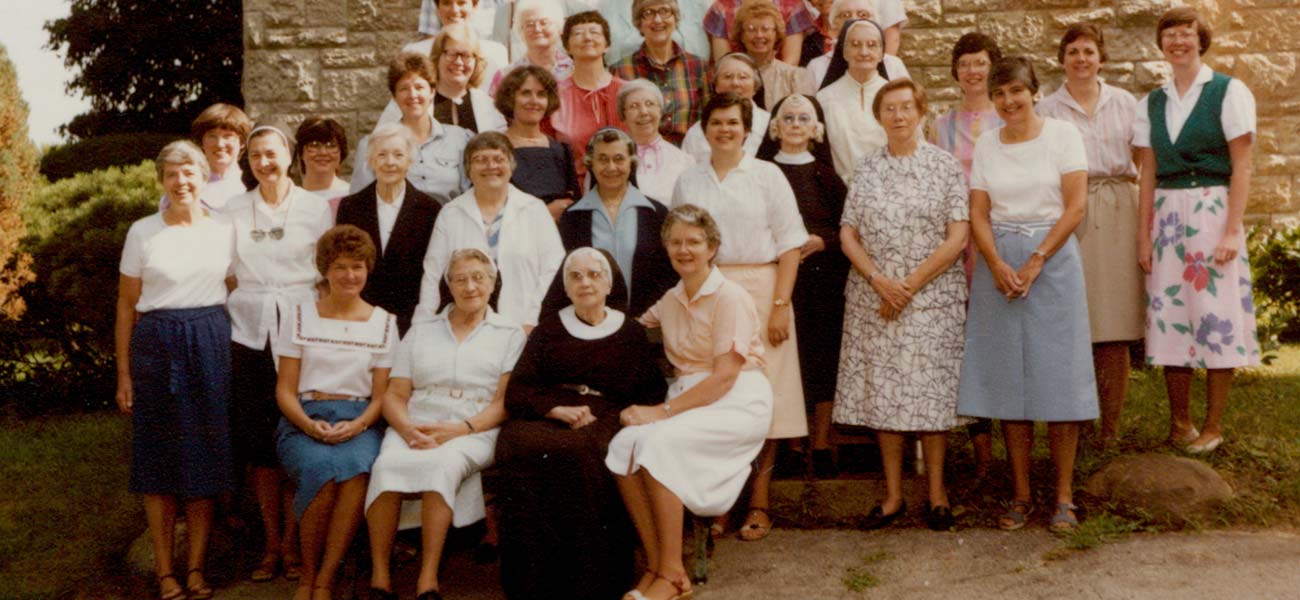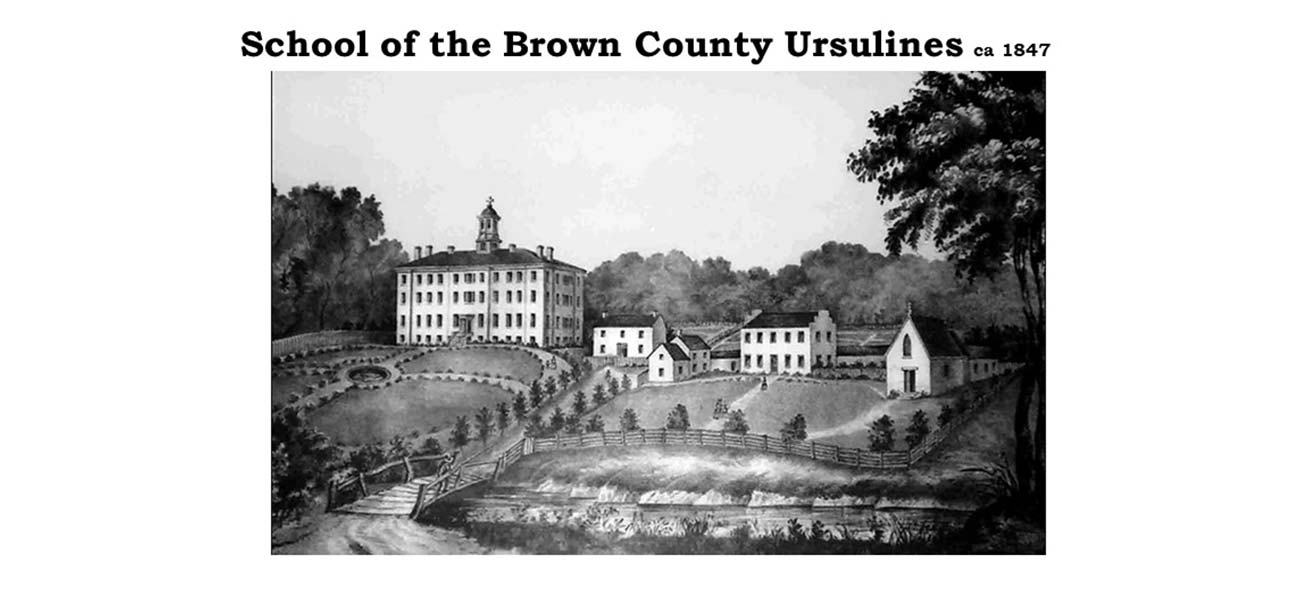
Ursulines of Brown County
In July of 1845, 11 women religious arrived in St. Martin, a village of French and Irish settlers at the northern tip of Brown County, Ohio. Archbishop John B. Purcell of the Archdiocese of Cincinnati had urged these Ursuline Sisters to establish a school for young women. He wanted their presence in the archdiocese because the Ursulines, founded by St. Angela Merici in 1535, were known for the quality of their educational ministry.
Englishwoman Sister Julia Chatfieldled the group, bringing an Irish novice and postulant from Boulogne, a metropolitan city in France. Pauline Laurier, accompanied by seven French-speaking sisters from the farming area of Beaulieu, England, joined them. Archbishop Purcell offered them a tract of land in Brown County that was part of the Virginia Military Land Grant deeded to the archdiocese by General John Lytle for educational purposes.
Within their first year in Brown County, the sisters borrowed money from France and began building a four-story brick building that would accommodate the growing student population and new members entering the religious community. This academy reached distinction as an educational institution. Families who wanted a balanced program of learning and culture for their daughters chose The School of the Brown County Ursulines. Girls came from New York, California, Canada, South America and places in between. The opportunity to share life with persons of many cultures was a rich experience, teaching openness, tolerance and flexibility — along with expected Christian values.
Eventually, progress brought new needs, and , boarding schools became less of an interest. In 1981, The School of the Brown County Ursulines closed and the original buildings were leveled.

Since 1845, the Ursulines have provided education for local children, too . In the early 1900s, the Ursuline Sisters’ day school transitioned into the St. Martin Parish school. In 1934, it became the first six grades of the local public school system. In 1961, the sisters relinquished the administration of that school to the local district, with several sisters continuing to teach in the Fayetteville-Perry schools.
For the Ursulines, religious education was also of primary importance. On the weekends, the sisters traveled to various parishes in Brown, Clermont, Clinton and Highland counties to provide catechetical instruction and sacramental preparation. In addition, the sisters recognized those living with food and clothing insecurity in the rural communities and established the Hope Emergency Program that continues to provide needed support.
It was always Sister Julia Chatfield’s and the original foundresses’ dream to open a day school in the city. In 1896, that dream was realized. Ursuline Academy opened with 40 students, boys and girls from kindergarten through high school. As the school population expanded, the elementary grades were phased out, leaving needed space for the all-girls high school. With space being the major constraint, the Ursulines moved the school from Oak Street to Pfeiffer Road in Blue Ash in 1970. Ursuline Academy continues to empower young women, helping them recognize their unique gifts and give voice to their ideals. The school’s mission still includes assisting students in striving for personal and academic excellence and seeking justice through actions inspired by Gospel values.
In 1971, a college program for the basic liberal arts education of young women entering religious life was established on the St. Martin campus. It aroused the interest of local people, and Chatfield College opened its doors to the public. Accredited by the Higher Learning Commission, the college grew and established a strong reputation as a place for adults to steep themselves in the basics of liberal arts higher education. In 1989, at the request of the Appalachian Council, Chatfield opened a campus in the inner city of Cincinnati, which is now housed in Over-the-Rhine. The college not only serves adults looking to improve their lives but also participates in the College Credit Plus dual enrollment program for Ohio high school students. Students have the opportunity to earn both high school and college credit at the same time.
The Ursulines of Brown County have always been women who accepted leadership roles in education and social services in Southwest Ohio and beyond. Parish grade schools have been a part of the ministry, including St. Vivian in Finneytown, St. Louis in Owensville and St. Peter in Huber Heights. Some of the sisters ministered in other schools in the archdiocese, including Carroll High School in Dayton; St. Henry and Annunciation in Cincinnati; Catholic Central High School, St. Theresa and St. Joseph in Springfield; and Mary Help of Christians in Fairborn. Members have served outside of the Cincinnati area as well, including locations in California, New Jersey, Chicago, Florida and places between.

